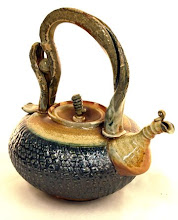AAVC 299, ALTERNATIVE MEDIA: Creative Play
The following is a description of a new course at Linfield
College (fall 2009) using The Play Book as a text.
This course will consist of two parts. One is an investigation into the thesis that play (playing) is a state of consciousness that promotes creativity. We will examine existing literature and check with institutional websites for any material that may substantiate (or deny) the primary thesis. Each of you will be expected to explore and research material resulting in an in-depth paper with your own personal conclusion.
And secondly, we will experiment by establishing two separate pathways towards a common goal as a laboratory experiment for direct experience using a described project with well-defined parameters. Here the goal is to direct your energies to completing a series of projects in a clearly prescribed manner. This will be familiar to most of you as it is how you have experienced art so far.
The other approach will be an exercise in taking control of your own interests. It will be using play as an essential tool for personal exploration into creative visual design and inventing a design project that reflects your desire. It may be anything! You are the BOSS. You may work alone or in collaboration. Start by starting. You can’t do anything wrong. Make your own rules. What if???
The class will evaluate the two approaches and attempt to reach conclusion on the efficacy of each. It will be an attempt to validate one or the other as the more creative. I expect there will be accumulated evidence to suggest that play is an important element in the creative exercise. But is it an essential? We will assess our findings and come to a conclusion that can be supported by evidentiary analysis.
Playing may be a quantum state of consciousness. Play is vibrant, it swarms with possibilities that go beyond our individual creative practices—beyond art. It is an active gateway to collecting, and connecting to the fields of energies that activate our world. Does it play an essential role in creativity?
Play is a fundamental state of being, and has been shown to be crucial to creative awareness. Play power is a modulus for creativity, a gift that can be nurtured as a wonderful tool for opening the world of imagination. The playful mind is sublime, passionate. The playful mind revels in ambiguity—not the ambiguity of those unable to make decisions, but the ambiguity inherent in shear possibility before decisions are made—positive ambiguity. It is a powerful tool for the exploration of options, of new and stimulating ways of making connections. But, can play be integrated successfully into the design process and how can it be done?
In the last half of the 20th century physicists have refined and developed an understanding of the universe that boggles common perception of reality. Through creative insights welling up from our unconscious, each of us has the potential to affirm similarities between the dance of imagination while at play, and experience the magical trajectory of a unique thought as it emerges into our consciousness. We have all experienced the wonder of, “where did that come from?” The human capacity for creativity, where mysterious leaps of the imagination can deposit a discrete thought into a conscious field, without an obvious trajectory, is at least analogous and may even be literally, a quantum event. How marvelous!
When we improvise we are creative. Play is a dance of intent without formula or endpoint. Focusing on the process may seem counterintuitive, but we will show that an intentional focus on the product is counterproductive—and imitative. By focusing on the process the ultimate product reveals itself in stages, layers and gradual unfolding as work progresses. The result often surprises us as it becomes. This is not imitative, but authentic expression of working from the inside out instead of outside in. Because play relies so heavily on ambiguity and is a state of being, how can it be consciously incorporated into conscious behavior like designing a project?



